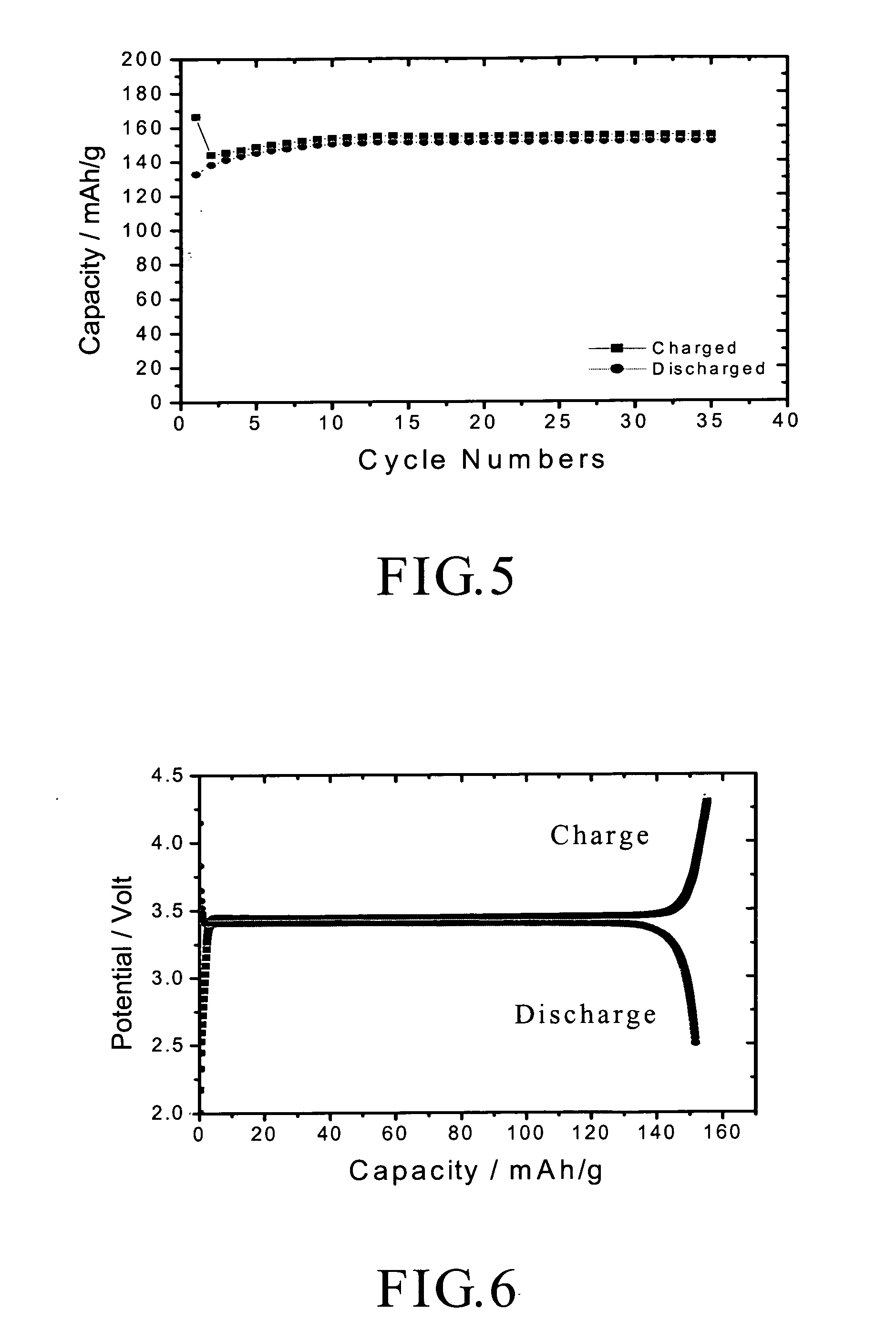Method for making a lithium mixed metal compound
a lithium mixed metal and compound technology, applied in lithium compounds, lithium compounds, phosphorus oxyacids, etc., can solve the problems of difficult synthesizing of nickel compounds, unstable lithium nickel oxide, and hardly applying lithium cobalt oxide to highly capacitive battery cells
- Summary
- Abstract
- Description
- Claims
- Application Information
AI Technical Summary
Benefits of technology
Problems solved by technology
Method used
Image
Examples
example 1
[0052] 0.2 mole of FeNO3 was added to 200 ml of deionized water. After the FeNO3 was completely dissolved in the deionized water, 100 ml of 2N LiOH solution was then added, so as to form a reactant mixture having a stoichiometric ratio 1:1:1 of Fe3+:Li+:PO43+. The reactant mixture was dried into a powder form, and was then placed in an aluminum oxide crucible. The crucible together with charcoal was placed in a tubular furnace which was heated at 700° C. for 12 hours in the presence of an argon carrier gas charging into the furnace. Carbon particles formed from the charcoal were suspended in the argon carrier gas and were mixed with the reactant mixture. A single phase LiFePO4powder product, containing the carbon particles and LiFePO4 powders, was obtained.
[0053] The LiFePO4 powder product thus formed was analyzed by CuKα X-ray diffraction analyzer (manufactured by SGS Taiwan Ltd., Taiwan) and the results are shown in FIG. 1. The X-ray pattern shown in FIG. 1 demonstrates that the ...
example 2
[0054] In this example, LiFePO4 powder product, containing the carbon particles and LiFePO4 powders, was prepared in a manner similar to that of Example 1, except that 0.2 mole of FeNO3 was replaced with 0.2 mole of FeCl3.
[0055] The LiFePO4 powder product thus formed was analyzed by CuKα X-ray diffraction analyzer, and the results are shown in FIG. 2. The X-ray pattern shown in FIG. 2 demonstrates that the LiFePO4 powders in the LiFePO4 powder product have an olivine crystal structure.
example 3
[0056] In this example, LiFePO4 powder product, containing the carbon particles and LiFePO4 powders, was prepared in a manner similar to that of Example 1, except that 0.2 mole of FeNO3 was replaced with a mixture of 0.2 mole of iron powders and 50 ml of concentrated HNO3.
PUM
 Login to View More
Login to View More Abstract
Description
Claims
Application Information
 Login to View More
Login to View More - R&D
- Intellectual Property
- Life Sciences
- Materials
- Tech Scout
- Unparalleled Data Quality
- Higher Quality Content
- 60% Fewer Hallucinations
Browse by: Latest US Patents, China's latest patents, Technical Efficacy Thesaurus, Application Domain, Technology Topic, Popular Technical Reports.
© 2025 PatSnap. All rights reserved.Legal|Privacy policy|Modern Slavery Act Transparency Statement|Sitemap|About US| Contact US: help@patsnap.com



